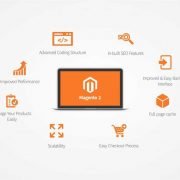There are lots of analytics tools out there. But which ones are going to put your organization a step ahead of the rest? Here’s how enterprises are gaining a competitive edge with next-gen analytics.
Artificial Intelligence Is Here to Stay
It’s pretty much impossible to talk about next-gen analytics without mentioning the star of the show: artificial intelligence. Over the past few years, AI has grown into its role as the conduit for greater advanced analytic capabilities.
The fact of the matter is AI is driving growth in the entire data industry, from top to bottom. This is because it fundamentally changes the rules of the game. Things that were impossible in the past can now be considered commonplace thanks to the revolutionary technological strides made with AI. On a general level, speed, accuracy, and overall analytics capabilities are some of the top areas where AI has really led to the proliferation of next-gen analytics.
Self-Service Is the Future
When it comes to next-gen analytics, there are few things considered more at the forefront than self-service tools. While it might not sound flashy, self-service analytics is completely changing how enterprises and individuals interact with and use data.
At its core, self-service analytics is an expression of data democratization. This is the idea that putting data analytics tools into the hands of more people within an organization can drive better business outcomes. This form of next-gen analytics is built on a few important premises:
- Organizations aren’t utilizing all their data, which is leading to not only lost opportunities, but waste. Empowering more people with analytics tools creates more chances for getting the most out of data.
- The old way of doing data analytics, where people had to send queries off to a dedicated team, which would then spend days or weeks working on the question before sending back the results, is painfully slow in today’s world. This kind of workflow is designed to bottleneck, as all data-based inquiries need to flow through the same channel.Self-service analytics solves this by putting the ability to work with data in the hands of more employees. This means people can get answers faster, while allowing analysts to spend their time more effectively.
- Putting analytics into the hands of more people helps to foster a data-driven culture. Self-service analytics is a clear win-win in this regard because it brings more people on board with using data while at the same time improving operations.
Engage with Data More Naturally
Working with data can be challenging for people who don’t have a good amount of experience with the tools and concepts. In the past, BI platforms required a significant amount of time and training to even get to a place of using them on a functional level, much less using them to their fullest potential. This is all going out the window thanks to next-gen analytics.
Natural language processing has been successfully integrated with some self-service analytics tools. This means users can communicate with the platform in a way that’s much more intuitive, but simply typing in, or even speaking, questions. Allowing individuals to uncover insights in this way is a massive step toward making data analytics accessible to everyone.
Let the Data Find Questions for You
What can next-gen analytics do for you that goes even a step beyond what has already been covered here? There’s actually something else pretty remarkable in its bag of tricks. Thanks to the power of AI, next-gen analytics can even suggest further questions for users based on data synthesis. This is a groundbreaking capability, as it can help guide people to big insights even faster.
There are so many ways next-gen analytics are shifting the way people utilize data, and even do business in general. Consider how introducing these tools to your enterprise can improve operations.












